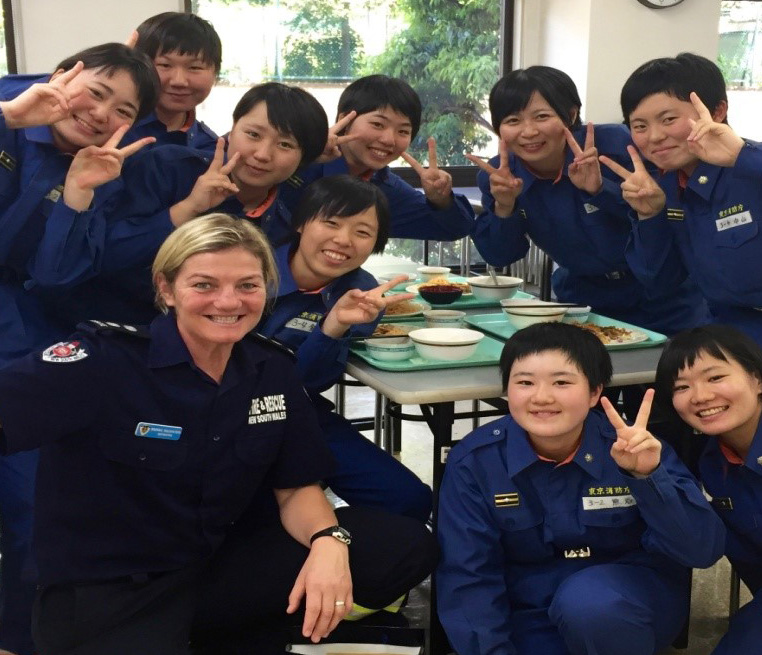
Bronnie Mackintosh with female firefighters of Rajasthan where a government quota is used to recruit women. Image: Sita Khatik.
Targeted recruitment
Targeted recruitment is a strategy to identify specific populations and increase their access and opportunities to being employed. It has been a standardised approach to recruitment since diversity was first recognised as a workforce need. Examples of targeted recruitment programs include women-only information and physical preparation sessions, information stands at sporting, social and community events and careers exhibitions in residential areas of target demographics. Australian fire agencies have generally adopted targeted recruitment as the default strategy for recruiting through a diversity lens. Australian fire services have had varying success with this approach.
Historically, the London Fire Brigade used positive action programs to recruit and promote women and ethnically diverse firefighters. Current Commissioner of the London Fire Brigade, Dany Cotton, is a product of their talent identification program and has been instrumental in mentoring other female firefighters into leadership positions.
The London Fire Brigade also had a graduate program that gave a preferential pathway for firefighters entering with external qualifications. In another targeted initiative, the London Fire Brigade ran a talent development program aimed to develop people with leadership potential. People were selected for their teamwork and ability to engage with the community rather than by traditional exams used in merit selection. Although both programs were successful in identifying talent and eliminating barriers for women and cultural diversity, resistance from resentful firefighters caused issues for inclusion.
Agencies must have a specific talent identification program and be able to ‘sponsor’ the promotional pathway of those who consistently demonstrate a capacity for leadership. There should also be appropriate ways to performance-manage those who attempt to undermine these selections. Once again, transparent process and rigorous selection is paramount to success.
One of the more successful models of targeted recruitment in the UK, was at Staffordshire Fire and Rescue. Under the direction of the female fire chief, the Staffordshire Fire and Rescue navigated the UK austerity measures and transformed their culture to be prevention-focused while still upholding their response performance in the community. Her team worked collaboratively with other emergency services by making home fire safety and wellness checks to all homes in their jurisdiction. She employed fire prevention technicians from at-risk communities and allowed them to wear the same firefighter uniform as the response firefighters. This demonstrated that every single person in the organisation contributed something to public safety and deserved to wear the same uniform. The fire prevention officers greatly expanded the diversity mix of the workforce and were well received by the at-risk communities because of their shared language and religious beliefs. When safety risks were identified during the home checks, the fire prevention personnel would refer the person or family to the relevant authority that could resolve their risk. This built community connection with all emergency service providers, gave a platform for educating the community, addressed safety issues and linked community members with each other.
The Los Angeles Fire Department used targeted recruitment for their past two campaigns. They use strong marketing, social media and web presence, connect with the community at multiple events and provide support programs for their target groups.
One of the strengths of the Los Angeles Fire Department recruitment strategy was their use of data as well as tracking candidates through the recruitment process.





